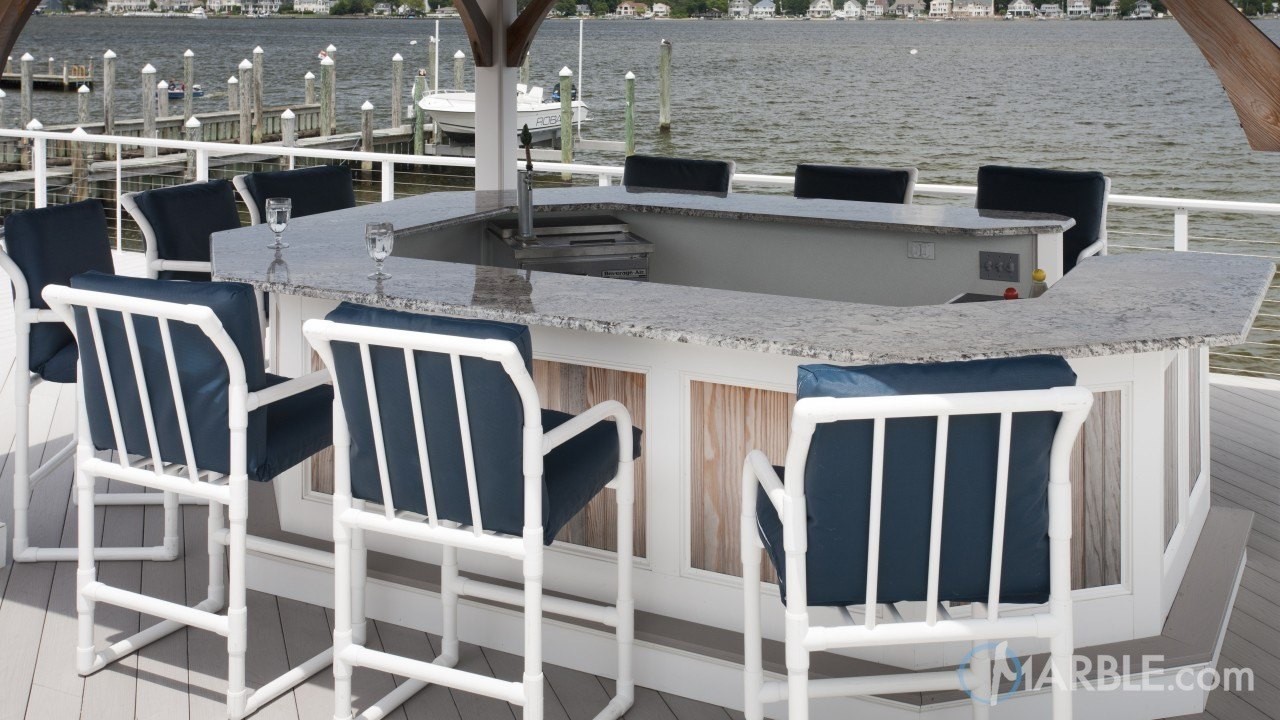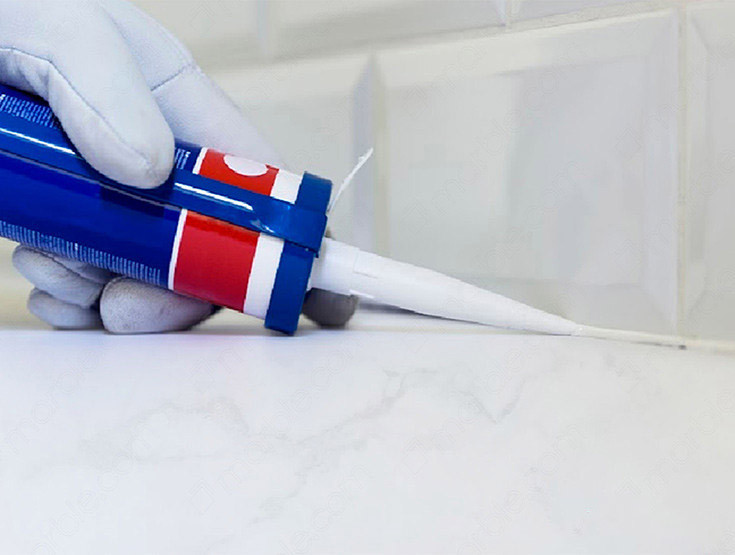Table of Contents

Homeowners looking to upgrade their kitchen countertops or bathroom vanity will find popular names like marble, granite, and quartz. While all three choices are admirable, there is another option people may not consider, and that is quartzite.
Quartzite is on par with the other top-notch countertop materials, but excels in some areas where the others lack. Before making your choice on countertop material, let’s look into quartzite more to see how it is made and how it might be the perfect choice for your countertops.
What is Quartzite
Quartzite is a non-foliated metamorphic rock, originally made from pure quartz sandstone. Through a series of high heat and pressure from tectonic compression, the sandstone is converted into quartzite. More specifically, during the metamorphic process, the sand grains recrystallize and the silica binds the grains together, creating interlocking quartz grains which are incredibly strong.
Where Does Quartzite Come From
Quartzite is formed during mountain-building events when the tectonic plates collide with one another. The intense pressure from the continental plates colliding buries the mineral deep in the Earth’s crust. Quartzite can be easily found in folded mountain ranges around the world.
How is Quartzite Made
Like all natural stone materials, quartzite is quarried from mines and cut out for fabricator companies to shape into slabs. Some of the biggest locations for quartzite stone quarries in the US are South Dakota, Texas, Minnesota, Wisconsin, Utah, Arizona, and California. Popular international quartzite quarries include Canada, UK, and Brazil.
After the quartzite has been mined out, it is sent to fabricators around the world to be cut into slabs and coated in a sealant, typically made from one of several substances: wax, acrylic, or polyurethane. Quartzite grains are very porous, meaning they can absorb hazardous liquids like acidic juices or harsh chemicals to form deep stains in the stone. Sealing quartzite offers a layer of protection from these hazardous liquids so it can be used for home interior design.
.jpg)
Pros and Cons of Quartzite
Like all natural stones, they have a number of advantages and disadvantages which should be known so homeowners can best utilize their stone properly. Since quartzite is made of quartz, it has much higher durability than many softer stones like marble.
Pros of Quartzite
Hardness Rating: According to the Mohs Hardness Scale, quartzite has a hardness rating of 7 out of 10.
Scratch Resistance: quartzite has a scratch resistance of 7 out of 10, making it very sturdy against scratches from forks, knives, and other sharp objects. That being said, it is ill-advised cutting directly on all stone countertops as constant cutting will form scratches over time.
Chip Resistance: quartzite has a chip resistance of 7 out of 10, proving it can withstand some damage without chipping, cracking or breaking. Homeowners should always use caution with their stone countertops, avoiding dropping or smashing objects on their countertops as constant damage can cause cracks.
Stain Resistance: quartzite has a stain resistance of 7 out of 10, showing it is difficult for stains to form in the stone. However, quartzite is very porous, so stains could still form and seep deeply into the stone. This is why quartzite should be sealed and re-sealed according to quartzite company recommendations.
Heat Resistance: quartzite has a heat resistance of 9 out of 10, proving to be exceptionally resistant to constant heat and remaining cool. Quartzite was formed from heat and pressure over thousands of years, so it has a natural affinity to deter heat. Homeowners should still be cautious as placing hot objects directly on quartzite or any stone countertops can cause burn marks which can be difficult to remove.
UV Resistant: quartzite countertops are ultraviolet resistant, so they will not fade or darken when placed in direct sunlight near a window.
Marble-Like Appearance: quartzite has a design identical to marble, which is highly coveted for its gentle colors, light veining pattern, and simplistic overall design. Homeowners who are on a budget and unable to afford marble, could substitute for quartzite instead. As a bonus, quartzite is much stronger than marble, so it can keep the look homeowners want, while having more durability.
Easy to Clean: quartzite is easy to clean, requiring only warm water, mild dish soap and a microfiber cloth to clean it once a day. No need for bleach or harsh chemicals as it could dull the stones’ lovely sheen.
[get_quote]
Cons of Quartzite
Porous: quartzite is very porous, and as we mentioned before, can absorb chemicals deep into the stone. Without proper sealing, stains can quickly form on your countertop or vanity. If a burn mark is absorbed into the stone that cleaning proves ineffective, it may require replacing your entire countertop.
Prone to Scratching: quartzite can still be damaged by sharp objects and marks will form on the surface when constantly used.
Expensive: quartzite is cheaper than marble, but it is still considered expensive because it requires specific diamond cutters to shape the stone to fit the homeowner’s project. This process requires more time and labor from the fabricators, which will cost more to the homeowner.
Difficult to Install: in addition to being expensive, quartzite is incredibly hard, dense, and heavy to move. It is not a stone to be used in DIY projects as it requires craftsmen with specific tools to move, shape, and install it.
Limited Options: quartzite naturally comes in limited colors; white, grey, and beige. It may have some smaller hues of orange, brown, beige, yellow, blue, pink, and purple, but most of the stone will look like marble.
Where Else Can I Install Quartzite
Quartzite is primarily used for kitchen countertop and bathroom vanity material, but it is not just limited to these locations. Quartzite can also be used as:
- Kitchen Countertop
- Kitchen Backsplash
- Bathroom Vanity
- Bathroom Backsplash
- Bathroom Wall
- Bathroom Floor
- Hot tub Surround
- Fireplace Surround
- Butler Pantry
- Wash Station
- Indoor bar
It is not advised to install quartzite outside, unless the fabricator company specifically says their product can be installed outdoors.
Conclusion
Quartzite is an exceptionally versatile stone that can withstand a lot of wear and tear from an active kitchen or bathroom. It can be an excellent alternative to marble countertops, without the disadvantage of being soft and delicate. Quartzite is fairly easy to clean but will need resealing to keep it protected from spills and stains. The next time you’re looking to install a new stone countertop or vanity, take a moment to see if quartzite is the stone for you.
















 The article helped me immensely
The article helped me immensely
 I’m now more informed on the subject
I’m now more informed on the subject
 I have questions about Marble.com
I have questions about Marble.com
 The article was not accurate at all
The article was not accurate at all
 There is a serious lack of information
There is a serious lack of information
 I have questions about Marble.com
I have questions about Marble.com